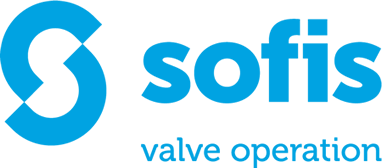The global supply of clean water is facing unprecedented pressure due to industrialization, growing demand, and increasing biological and chemical contamination. This strain presents a serious threat to the environment, public health, and the well-being of both current and future generations. Water treatment facilities play a critical role in delivering safe, clean water; however, the risk of chemical contamination remains a constant challenge. One of these risks involves handling hazardous chemicals such as Oxalic Acid. This is a potent cleaning agent that if mistakenly introduced into the drinking water system, can have severe health consequences. Exposure to Oxalic Acid can cause dizziness, nausea, vomiting, and in severe cases, lead to convulsions, coma, or even death. As such, maintaining the highest standards of operational safety is absolutely essential.
Potential for human error
The Chemical Cleaning Station (CCS) of one of Norway’s largest water treatment plant, was operated entirely manually, using manual valves and a local control panel to manage pumps and mixers. During a risk assessment, it became clear that the potential for human error in valve operation could lead to a catastrophic scenario; Oxalic Acid entering the drinking water system. This realization called for a robust, fail-proof solution. The plant required a system to prevent accidental pumping of Oxalic Acid into the water supply. Plant management contacted the supplier of their water treatment solution. In response, this supplier sought guidance from Sofis to mitigate the risk of human error, which had led to Oxalic Acid contamination.
Valve interlocks
To address the risks, the cleaning station supplier approached Sofis to devise a solution to prevent accidental pumping of Oxalic Acid into the drinking water. Sofis implemented valve interlocks on the manual valves, combined with a customized engineering solution involving an electronic key cabinet connected to the plant’s Programmable Logic Controller (PLC). The system was designed to ensure that valve operation could only occur under strictly controlled conditions.
- Each valve was fitted with an interlock, and only one valve key could be removed from the key cabinet at a time. This ensured that only the valve with the active key could be opened, while all other keys remained trapped inside the cabinet. This physical control eliminated the possibility of multiple valves being operated simultaneously due to human error.
- The system included an electrical interlock on the pumps to further mitigate risks. The interlock ensured that valve interlock keys could only be released once the power to the pump was safely interrupted. This safeguarded the process by ensuring that chemical flow could not occur unintentionally while the valves were being manipulated.
- The electronic cabinet was connected to the plant’s PLC, allowing the entire process to be automated and controlled remotely. This provided an additional layer of security by allowing real-time monitoring and control over the valve operations, reducing reliance on manual intervention.
Preventing chemical contamination
The introduction of Sofis’ valve interlock system provided a critical layer of safety to the water treatment plant’s operations. The potential for Oxalic Acid contamination of drinking water was effectively mitigated, ensuring that the plant could continue its cleaning processes without the risk of accidental chemical exposure to the public. The project has since been deemed a success, and the system operates smoothly, significantly reducing the plant’s operational risks.
Eliminate human error
In critical infrastructure projects where the safety of public water supplies is at stake, it’s essential to have systems that can guarantee human error is minimized or eliminated. Sofis’ combination of mechanical interlocks and electrical controls successfully provided the water treatment plant with the assurance they needed, preventing the possibility of Oxalic Acid contamination.


